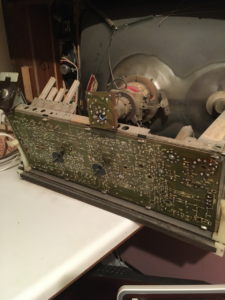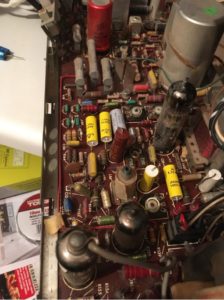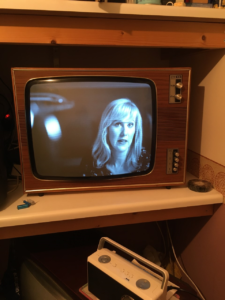Author: Simon Hockenhull -
This all started with the release of the TV licences issued by TV licences.
Every year TV Licencing issues the number of television receiver licences it has issued. It all came about as a result of a storey ran by our local BBC radio station, Radio Bristol, about the number of black and white television licences issued by TV Licencing.


It is a legal requirement in this country for everyone who owns and operates a colour TV or uses a PC, Laptop, tablet, smart phone etc to access BBC iPlayer and other BBC online content to buy a TV licence. There are still thousands of black and white licences issued and the question was asked by BBC Radio Bristol can old black and white televisions still work with today’s digital television. A few of us responded to this question and they seem to like my response. This lead to an interview with Radio Bristol at my house. The chat or interview lasted for nearly two hours with him taking photos and videos of a couple of my black and white tellies including one warming up!
When the Radio Bristol Journalist, Jonathon, compiled and put up the video this was picked up by presenter journalist Liz Deacon who wanted to do a live broadcast for the regional evening magazine programme Points West.


Last night’s live broadcast for BBC Points West It was a very interesting experience. There were three of us in my small congested workshop plus a large ruck sack full of communication equipment, which they were struggling with, and the large camera which she had to put on her shoulder when she used it. They could not get a direct link back to the studio so had to go over the cellular phone network using a device which used three or four SIM cards! The talkback facility worked over their mobile phones and seemed to work ok.
All this going on did produce some mobile phone interference effects to the pictures on the televisions but it was not too bad.
As for the interview it was a bit of a blur and you did not have time to say half the things you wanted to say.
Most distracting of all during the live broadcast was the delay. I was talking into the camera and to Liz Deacon, one of our more well known local TV presenters, but out of the side of my eye I could see myself on my 20" ITT black and white telly but with a considerable delay. I had to really concentrate on looking and listening to Liz and focusing on the camera.
All in all an interesting experience and I was very relieved that my slow juddery and intermittently freezing Freeview set top box just about held up.
I have enjoyed my few minutes of fame which is already consigned to history.
One final point it was a bit surreal talking about black and white tellies whilst completely overlooking my pride and joy, by far and away one of my biggest technical achievements, my 1971 Decca Bradford colour set.
But I feel an important point was missed.
Yes I do enjoy watching these older sets but by far and away the greatest enjoyment is the technical challenge of getting this older equipment, black and white and colour tellies, radios and amps etc working properly then running them and to keep them running. This means using old skills which many of us gained as Radio/TV engineers some years back and using our critical eye and hearing again something which many of us developed back in the day and indeed is still with us today.
